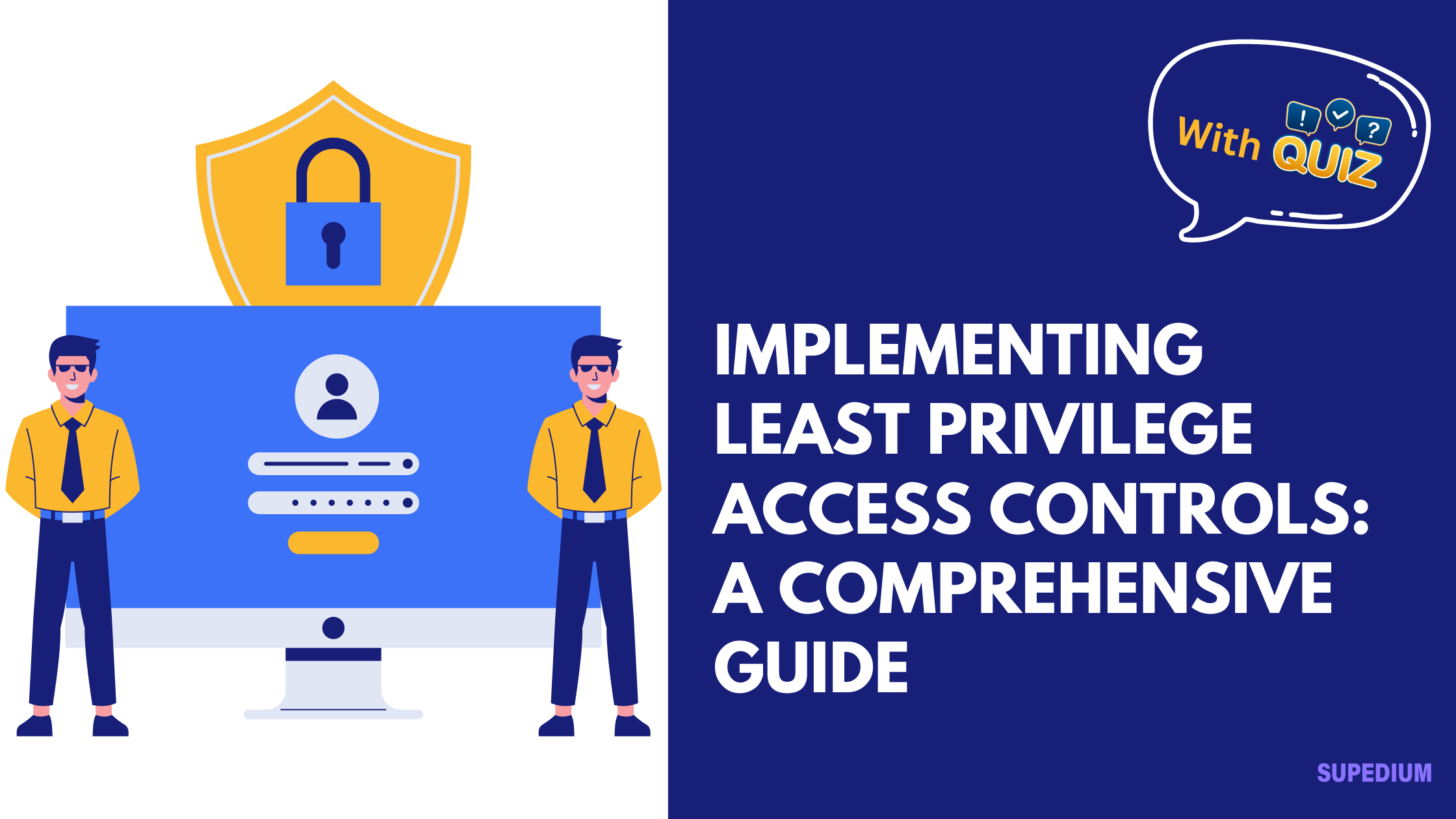Table of Contents
![]()
I. Introduction
Least Privilege Access Controls is a fundamental security principle that aims to minimize the permissions granted to users, processes, and systems to only what is necessary for them to perform their functions. By adhering to the principle of least privilege, organizations can significantly enhance their security posture, reduce the risk of accidental or malicious damage, and ensure compliance with various regulations.
II. Planning and Assessment
A. Understanding Organizational Needs
Before implementing least privilege access controls, it’s crucial to understand the organization’s needs. This involves identifying critical assets, such as sensitive data and essential systems, and evaluating existing access control policies. Understanding what resources need protection and how they are currently being accessed provides a foundation for designing effective access control measures.
B. Conducting a Risk Assessment
A thorough risk assessment helps identify potential threats and vulnerabilities associated with different levels of access. This involves evaluating the impact of unauthorized access or misuse of data and systems. By understanding these risks, organizations can better define access levels and implement controls that mitigate potential threats.
C. Defining Roles and Responsibilities
Creating a clear map of job functions to access needs is essential. This includes defining roles and responsibilities and establishing a Role-Based Access Control (RBAC) model, which assigns permissions based on user roles rather than individual identities. This approach simplifies management and ensures that access is granted according to job functions and responsibilities.
III. Design of Least Privilege Model
A. Access Control Models
Several access control models can be employed to enforce least privilege:
- Role-Based Access Control (RBAC): RBAC assigns permissions based on user roles within the organization. Each role is associated with a set of permissions, and users are assigned roles based on their job functions.
- Attribute-Based Access Control (ABAC): ABAC uses attributes (such as user attributes, resource attributes, and environmental attributes) to determine access. This model allows for more granular control and dynamic access decisions based on multiple factors.
- Policy-Based Access Control (PBAC): PBAC involves defining policies that govern access based on various conditions and rules. It provides flexibility and adaptability in managing access permissions.
B. Defining Access Policies
Access policies are crucial for implementing least privilege controls. These policies outline the rules and guidelines for granting, managing, and reviewing access permissions. Implementing Segregation of Duties (SoD) ensures that no single individual has excessive control over critical processes, reducing the risk of fraud and errors.
C. Creating Access Control Matrix
An Access Control Matrix (ACM) is a tool that maps users to their roles and permissions. This matrix helps in documenting and visualizing who has access to what resources, ensuring that permissions align with job functions and organizational policies.
IV. Implementation
A. Access Provisioning
Access provisioning involves assigning initial access based on defined roles and permissions. Automated tools can facilitate user provisioning, ensuring that access is granted efficiently and consistently according to the established least privilege model.
B. Access Review and Approval
Implementing approval workflows for access requests ensures that all access changes are reviewed and approved by appropriate personnel. Regular review and revalidation of access rights help maintain the principle of least privilege by adjusting permissions as roles and responsibilities change.
C. Privilege Escalation Control
Privilege escalation control is vital for managing temporary or elevated access rights. Just-In-Time (JIT) access solutions allow users to obtain elevated privileges only when necessary, for a limited time, and with appropriate oversight.
V. Monitoring and Maintenance
A. Continuous Monitoring
Continuous monitoring involves implementing logging and alerting mechanisms to track access and detect anomalies. Regularly reviewing access logs helps identify unusual activities and potential security incidents, enabling timely response and mitigation.
B. Periodic Access Reviews
Scheduled audits and reviews of access controls ensure that permissions remain appropriate over time. This process involves reassessing user roles and access rights, making adjustments as needed based on changes in job functions or organizational structure.
C. Incident Management
Effective incident management involves responding to and managing access-related security incidents. Post-incident analysis helps identify root causes and implement corrective measures to prevent future occurrences.
VI. Challenges and Best Practices
A. Common Challenges
Organizations may face challenges such as balancing security with usability and managing complex access control environments. Addressing these challenges requires careful planning, ongoing evaluation, and adaptation of access control strategies.
B. Best Practices
- Regularly Updating Access Control Policies: Keep access control policies up-to-date with evolving organizational needs and security threats.
- Training and Educating Staff: Ensure that employees understand the importance of least privilege and adhere to access control policies.
- Leveraging Automation and Access Control Tools: Use automated tools to streamline access management and enhance security.
VII. Compliance and Legal Considerations
A. Regulatory Requirements
Compliance with regulations such as GDPR, HIPAA, and CCPA is essential for protecting sensitive data and ensuring privacy. Organizations must align their access control practices with these legal standards to avoid penalties and maintain trust.
B. Documentation and Reporting
Maintaining comprehensive records of access controls and changes is crucial for demonstrating compliance and preparing for audits. Accurate documentation supports transparency and accountability in access management.
VIII. Conclusion
Implementing least privilege access controls is a critical step in enhancing an organization’s security posture. By following the outlined steps—from planning and designing to monitoring and maintaining access controls—organizations can effectively manage permissions, reduce risks, and ensure compliance with regulatory requirements. Continuous improvement and adaptation to evolving threats and technologies will further strengthen access control practices and safeguard organizational assets.






Be the first to comment